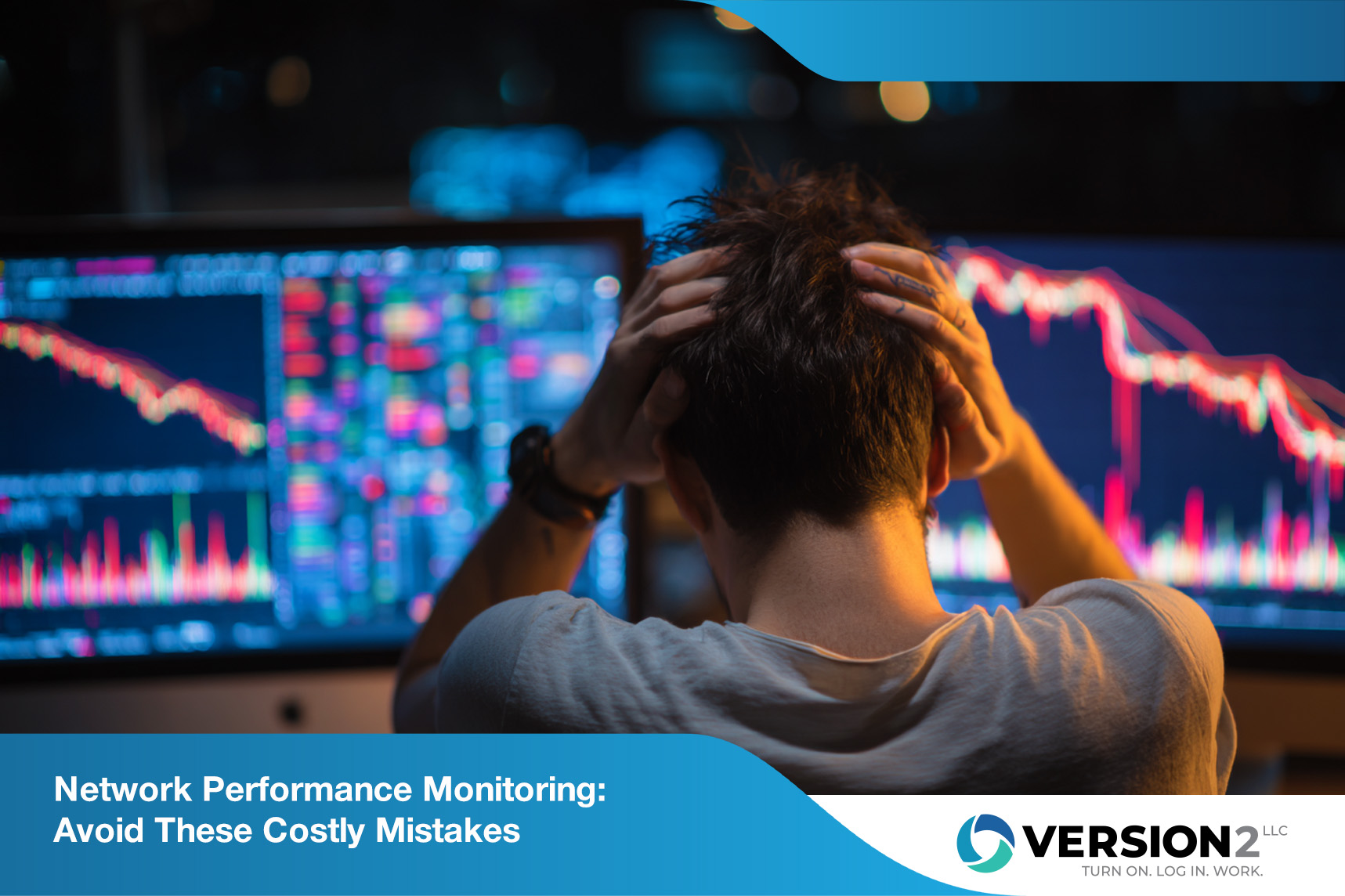
October 30, 2025
Remote Work Security: Protect Remote Access & Secure Workspaces
This blog covers remote work security essentials, including tools, risks, and best practices to help protect your team, devices, and data from cyber threats.
July 29, 2025
.jpg)
Every business owner has the same silent nightmare: Waking up to find their entire operation frozen because a disaster has hit their IT systems overnight. It doesn’t matter if it’s a natural disaster, human error, or a targeted cyberattack—when your systems go down, your revenue stops, your clients grow restless, and your reputation hangs by a thread.
And yet, many businesses gamble on the hope that “it won’t happen to us.” But the truth is, if you don’t have a disaster recovery plan in place, you’re not just at risk—you’re practically inviting the worst-case scenario to your front door.
The good news? A solid, tested IT disaster recovery process can prevent that nightmare from becoming your reality. But not all plans are created equal. You need a strategy that fits your business like a glove—one that ensures your business continuity, protects your critical data, and gets you back to full strength with minimal downtime.

When a disaster hits, it’s not just about fixing broken systems. It’s about knowing exactly what to do to get your business back on its feet—fast. That’s what the IT disaster recovery process is all about. It’s a structured sequence of steps that help you respond, recover, and restore operations after a disruptive event, whether caused by a natural disaster, hardware failure, or human error.
Think of it like an insurance policy, but better—it’s your plan to ensure that even if your servers crash, your data gets corrupted, or your network is attacked, your team knows the steps to restore critical systems without scrambling in panic.
Here’s how it works:
Without a structured disaster recovery process, every minute of downtime chips away at your profits, client trust, and competitive edge. That’s why more businesses are turning to IT disaster recovery consulting services to craft solutions tailored to their unique infrastructure and risk profile.
In a city like Chicago, where businesses thrive on connectivity and continuity, having a tested information technology disaster recovery plan isn’t just smart—it’s essential for survival.
If you’ve ever said, “We’ll deal with it if it happens,” then you’re unintentionally gambling with your company’s future. The moment a disaster hits—whether it’s a natural or human-made disaster, a server crash, or an accidental data wipe—your window to recover starts closing fast. Without a disaster recovery plan, your team won’t have a playbook to follow, which means panic, poor decisions, and costly delays.
A well-developed DRP is your safeguard. It’s the blueprint that tells your recovery team how to minimize damage, recover critical data, and restore business operations before you lose clients or profits. More than that, it supports your business continuity plan, ensuring that even during a major disruption, you can keep functioning—or at least resume quickly.
The stakes? Massive financial loss, reputational damage, and in extreme cases, permanent closure. Studies show that businesses without a clear disaster recovery plan often don’t survive a significant disruptive event. That’s because every minute of downtime is revenue lost, customers frustrated, and competitors ready to swoop in.
And it’s not just about having backups. Without clearly defined recovery strategies, your data backup could be outdated, incomplete, or inaccessible when you need it most. That’s where IT disaster recovery consulting services come into play. They help design disaster recovery plans to ensure your data protection strategy aligns with your business impact analysis, risk assessment, and overall recovery priorities.
The bottom line? A disaster recovery plan helps you control chaos when it matters most, turning a potential business-ending event into a manageable setback.

An effective IT disaster recovery process isn’t a generic checklist—it’s a comprehensive plan built around your unique infrastructure, vulnerabilities, and business continuity needs. Without the right key components in place, even the best intentions will crumble under the weight of a real disaster.
Here’s what your DRP should never skip:
You can’t protect what you don’t understand. This phase identifies which business processes, applications, and information systems are critical to keeping your business alive. A thorough business impact analysis paired with a detailed risk assessment helps you determine where your vulnerabilities lie—whether it’s data loss, hardware failure, or cyber threats.
Establishing your recovery time objective (RTO) and recovery point objective (RPO) is non-negotiable. These define:
Clear recovery objectives set the bar for every decision in your recovery strategies.
When chaos hits, you need boots on the ground. Assigning roles to a trained disaster recovery team ensures that every task, from executing the recovery procedure to coordinating with vendors, is handled without confusion. This team should know the plan is critical, and their roles and responsibilities must be crystal clear.
Your plan must include a robust data backup strategy with multiple layers of redundancy—both onsite and offsite. Think cloud storage, cloud disaster recovery, or even a disaster recovery site that mirrors your primary environment. Without reliable backup and recovery, your recovery efforts will stall before they begin.
In the event of a disaster, communication is everything. A structured communication plan ensures internal teams, stakeholders, and clients stay informed throughout your recovery activities. Silence breeds uncertainty; clarity builds confidence.
You can’t afford to guess whether your disaster recovery solution works—you need to test the plan regularly. Simulated disaster scenarios reveal gaps, validate recovery time, and fine-tune your approach. A plan should include ongoing reviews to adapt to changing technologies and threats.
Finally, every DRP needs comprehensive documentation. A detailed disaster recovery plan template ensures that no step is left to chance. This document guides your response plan, from the first moments of a disruptive event to full operational restoration.
Developing an IT disaster recovery plan doesn’t have to feel like climbing a mountain, but skipping steps? That’s where businesses get burned. If your strategy is incomplete or too generic, a real disaster will expose every weak link.
Here’s a clear roadmap to develop an IT disaster recovery strategy that keeps your business operations resilient, no matter what hits.
Start with a risk assessment to identify every possible disaster scenario—from a natural disaster to cyberattacks to simple human error. Pair this with a business impact analysis to understand what happens to your critical business functions if each disruption occurs. Knowing what’s considered a disaster for your business helps you prioritize resources.
Set your recovery time objective (RTO) and recovery point objective (RPO). These define:
These recovery goals influence your backup frequency, storage solutions, and overall disaster recovery strategies.
You can’t recover what you don’t track. Create an inventory of your infrastructure and systems, applications, hardware, and critical data. This asset list ensures your recovery team knows what must be restored first to resume normal operations.
Every DR plan needs a plan for data backup. Implement solutions like cloud storage, off-site backups, and even cloud-based disaster recovery options. A hybrid approach (onsite + cloud) provides layers of data protection, giving you options if one method fails.
Your disaster recovery team is the engine of your plan. Define their roles and responsibilities, from activating the recovery procedure to liaising with vendors and ensuring compliance. Each member should know their specific duties during a disruptive event.
This is the action plan when a disaster strikes. It should include steps to contain the disruption, activate backup and recovery, and restore critical data. Your response and recovery steps should be detailed enough that anyone on the team can follow them under pressure.
Don’t let confusion add to the chaos. Your communication plan should outline how and when to update stakeholders, employees, and clients during the recovery process. Transparency is crucial to maintaining trust when your systems are down.
Use a structured disaster recovery plan template to document every aspect of your plan. This creates a reliable guide to follow during emergencies, and it makes testing and updates easier.
A plan that’s never tested is a plan that’s bound to fail. Regularly test the plan through drills or simulations. Testing exposes gaps, verifies that recovery efforts meet your recovery objectives, and ensures your disaster recovery team stays sharp.
Technology evolves, and so do threats. Review your disaster recovery plan at least annually or after major system changes. Keeping it updated guarantees that your disaster recovery solution stays relevant and effective.

Here’s the truth—no one expects a disaster, but every smart business owner prepares for one. The cost of downtime, the pain of data loss, and the scramble to piece together your operations after an unexpected disruptive event—they’re all avoidable when you have a rock-solid disaster recovery plan in place.
If you’re serious about protecting your business from the unknown, don’t just cobble together a few backup solutions and hope for the best. Engage with specialists in IT disaster recovery consulting services who can help you tailor a comprehensive disaster recovery strategy specific to your systems, data, and objectives.
At Version2, this is exactly the kind of expertise we bring to businesses across Illinois. For over 15 years, our U.S.-based team has been proactively safeguarding companies with customized disaster recovery plans, ensuring that when a disaster does hit, recovery isn’t just possible—it’s expected.
The most effective recovery strategies combine proactive planning with the right technology. For small businesses, this often means a mix of on-premises backups and disaster recovery as a service. This ensures that if a disaster occurs, your systems and data can be restored from a secure data center, allowing for rapid recovery with minimal downtime. Working with experts helps tailor these solutions so you’re not just recovering, but doing so quickly enough to protect your bottom line.
There are several types of disaster recovery, but the most common include data center recovery, cloud-based recovery, and virtualization recovery. Some businesses also opt for DRaaS (disaster recovery as a service), which provides a cloud-managed solution without the need for heavy infrastructure investment. Choosing the right type depends on your operational needs, compliance requirements, and budget, but every option should support your broader business continuity goals.
Anything that disrupts your ability to operate is considered a disaster. This includes natural disasters like floods or earthquakes, but also cyberattacks, hardware failure, extended outages, and even human error. If it prevents you from maintaining normal business operations, it qualifies as a disaster that demands a prepared response.
The key elements of a disaster recovery plan revolve around preparation, protection, and execution. You need a clear understanding of your systems and data, defined recovery strategies, a skilled disaster recovery team, dependable data backup, and a detailed response plan. Without these, you’re left guessing when a disruptive event threatens your business.
Without a business continuity and disaster recovery plan, you’re gambling with your company’s survival. A formal plan doesn’t just prepare you for the worst—it ensures you can minimize recovery time, protect critical data, and keep delivering value to customers, even when things go wrong. It’s the difference between a temporary hiccup and a business-ending catastrophe.
An effective information technology disaster recovery plan is more than just a checklist. It should detail recovery objectives, a tested response plan, clearly defined team responsibilities, data backup procedures, and ongoing updates to adapt to new threats. This plan is a documented and dynamic guide designed to help you restore normal business functions as quickly and efficiently as possible.

October 30, 2025
This blog covers remote work security essentials, including tools, risks, and best practices to help protect your team, devices, and data from cyber threats.

October 29, 2025
Explore cloud cost optimization strategies, tools, and best practices to reduce waste, manage cloud spend, and improve visibility across your cloud environment.

October 28, 2025
Discover how network performance monitoring helps detect issues, improve visibility, and optimize connectivity across hybrid and on-premises environments.